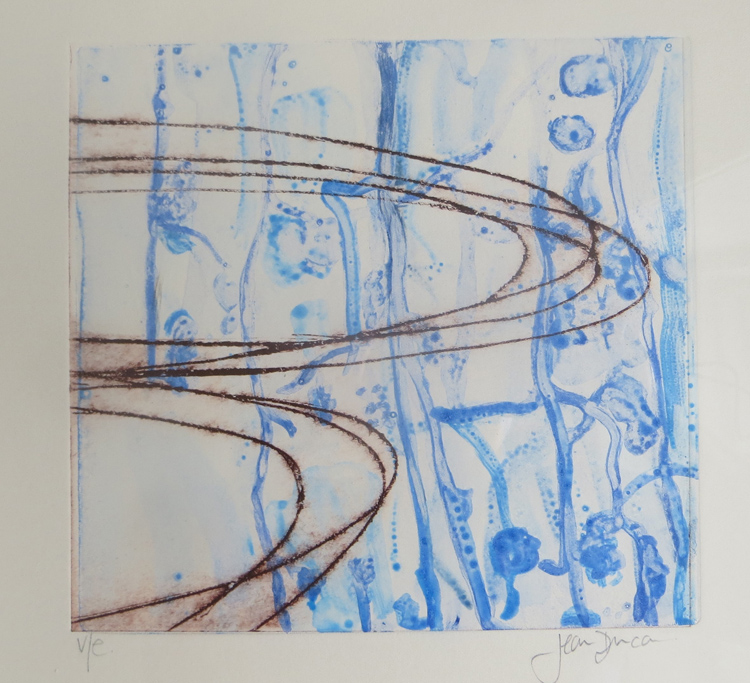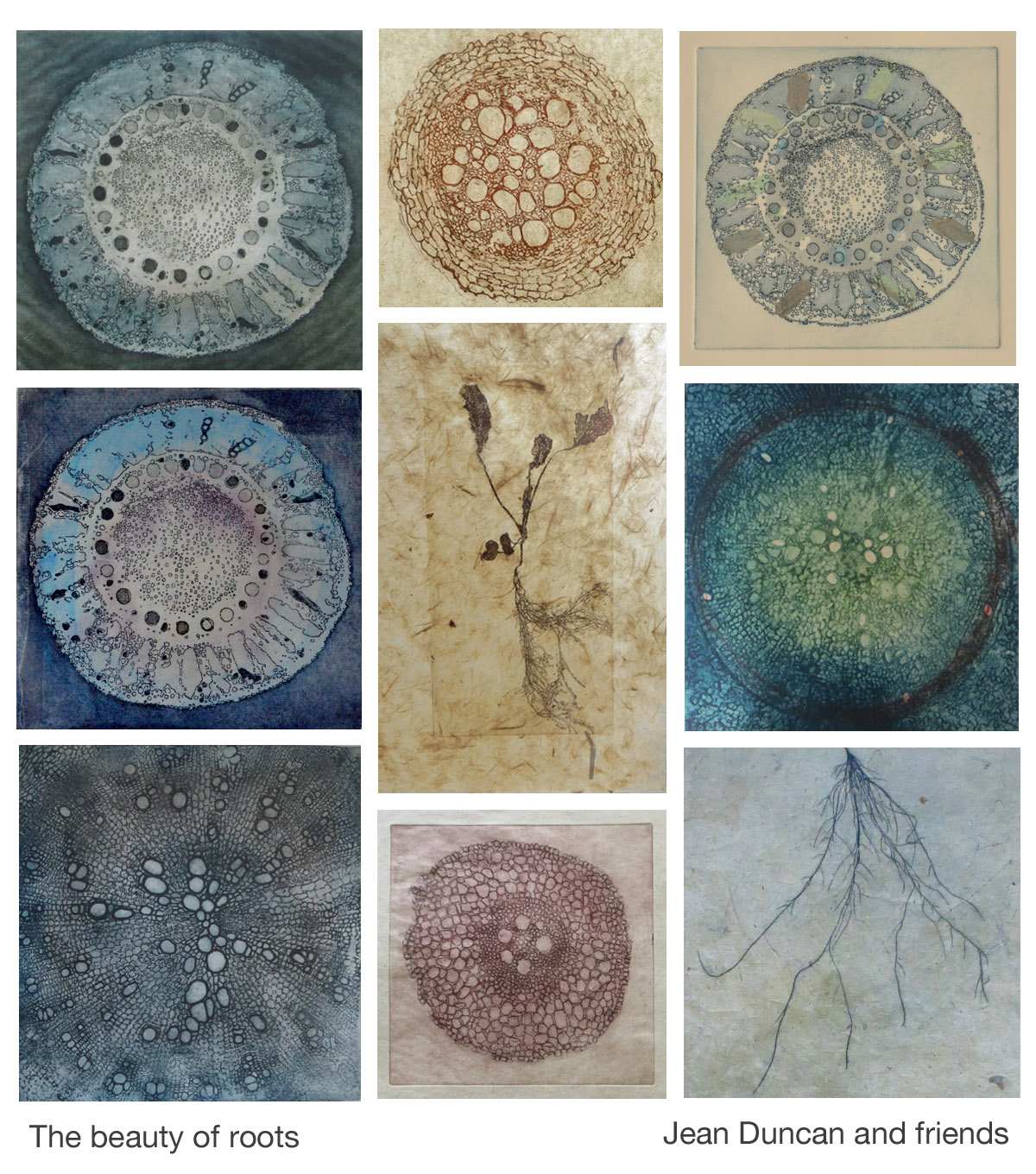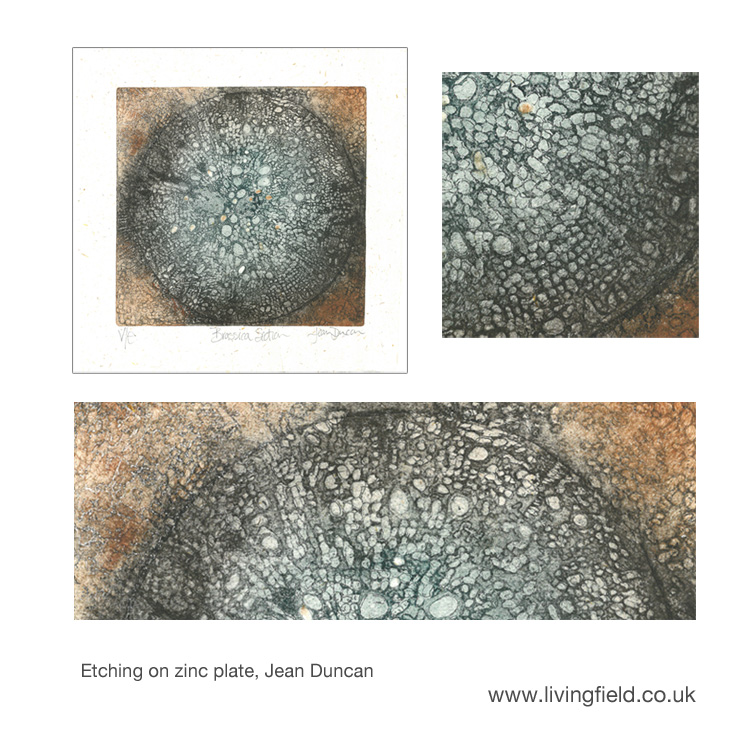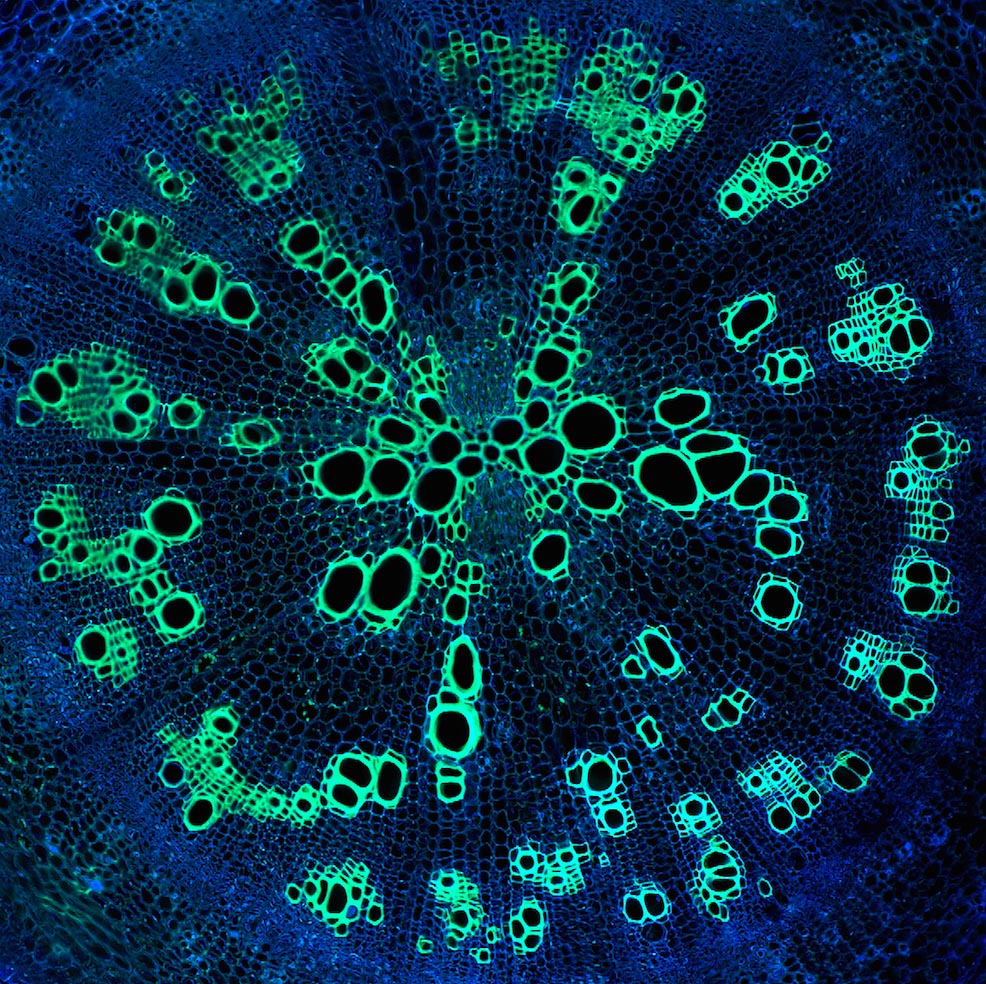What a great day, 9 June! Yet another successful Open Farm Sunday at the Hutton Dundee. Crowds of visitors enjoying themselves in sunny weather. The Living Field garden did its bit as before – exhibits on barley and legumes in the polytunnel, potato varieties in the west garden and further science exhibits in the cabins.
Our friends from Dundee Astronomical Society were here again showing people round the new observatory and explaining about the sun, moon and noctilucent clouds. And this year we were helped for the first time by a workshop on cyanotype imagery run by Kit Martin.
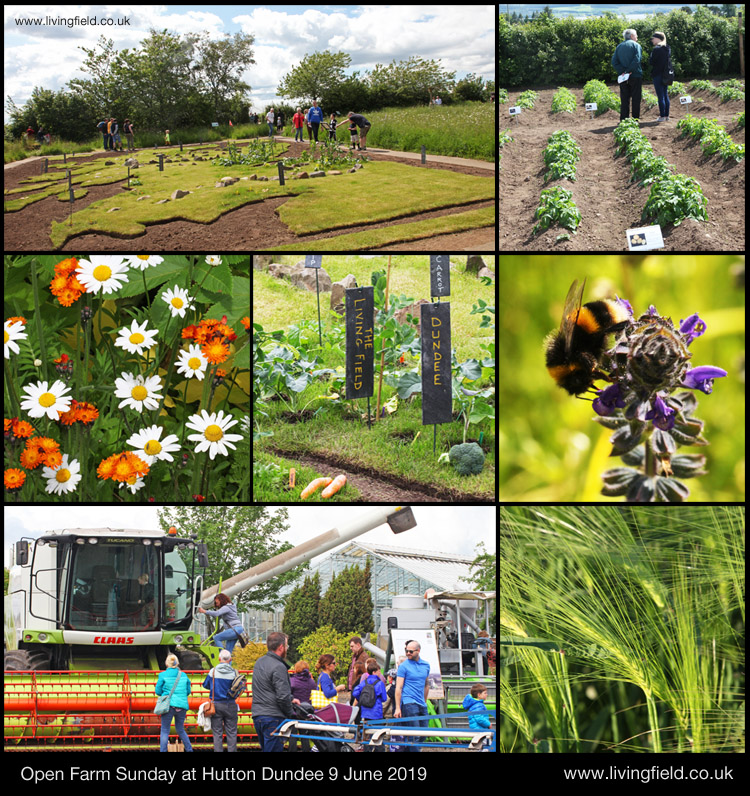
The centrepiece was the new Vegetable Map of Scotland, shown top left and centre in the panel above. For more on how it was made, see Vegetable map made real. The map occasioned much comment and wonder that the country was already growing such a wide range of vegetables and could grow much more of its own.
The two posters located next to the Vegetable map are available to view or download here.
The Vegetable Posters
One of the posters – The Vegetable Products of Scotland – explained the background to the original Vegetable map which was first shown at Can we grow more vegetables? The poster is reproduced below as a low resolution jpg image. It is also available as a pdf file printable up to A3 size.
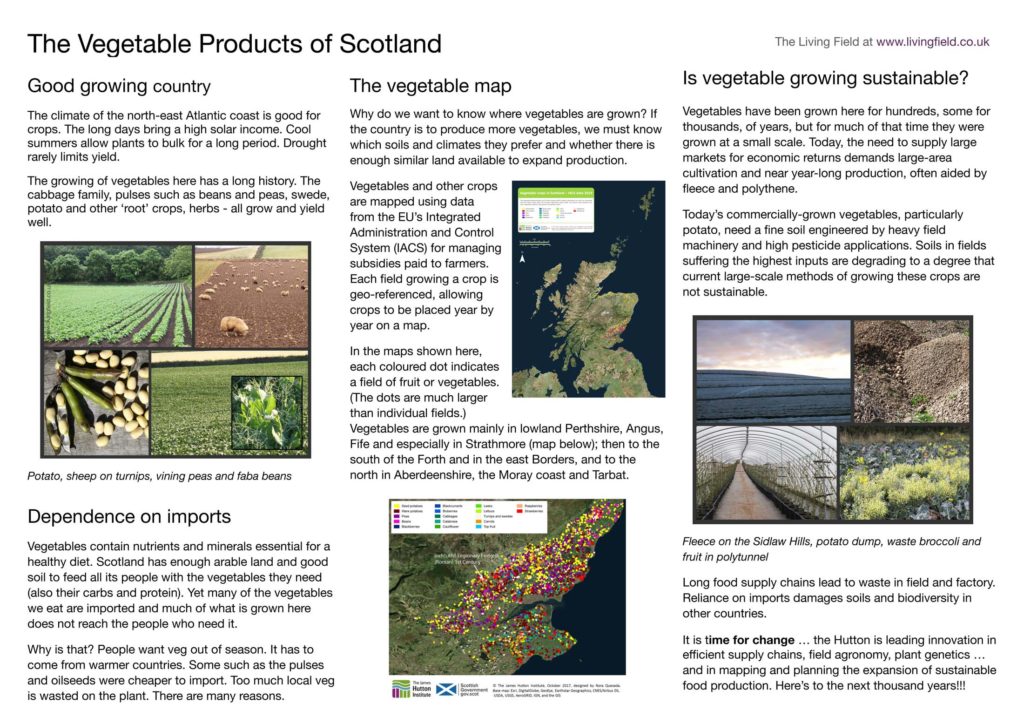
Click for an A3 size pdf of the Vegetable Products of Scotland.
The other poster – Vegetables in the Living Field garden – showed many of the vegetables typically grown in the garden, grouped into leaves, fleshy fruits, roots and seeds. More on the plants can be seen at the garden pages under Vegetables. This poster is also reproduced as a jpeg below and available as a pdf.
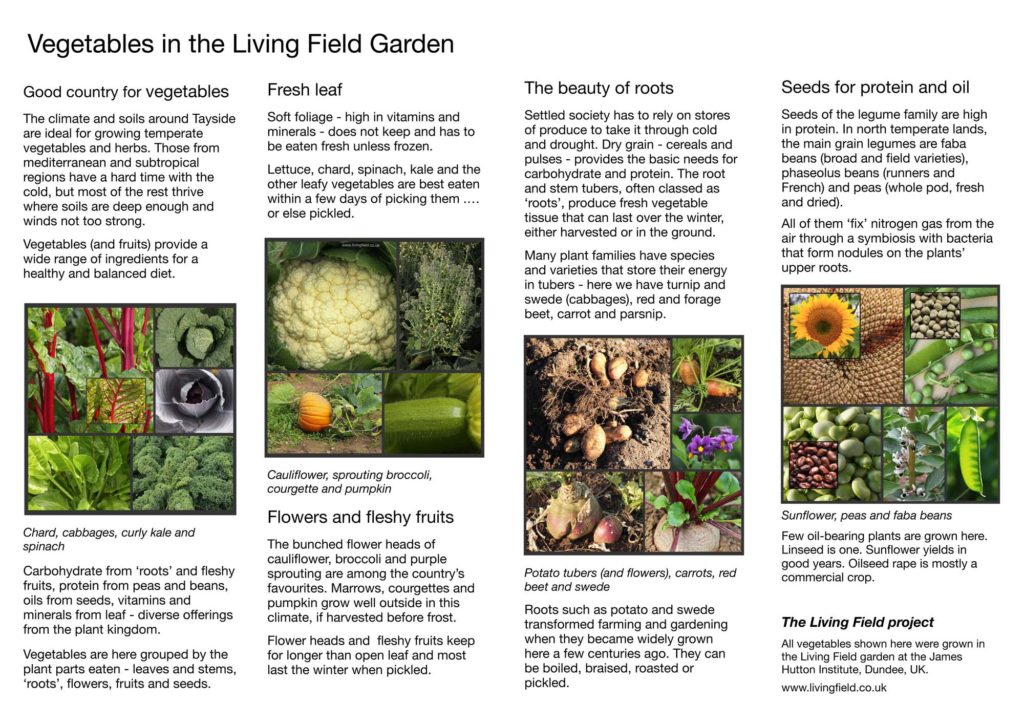
Click for an A3 size pdf of Vegetables in the Living Field garden.
Contacts for Living Field activities: gladys.wright@hutton.ac.uk or geoff.squire@hutton.ac.uk
Open Farm Sunday was a joint effort between The Farm, science staff, the events team, the Living Field community and many others.

